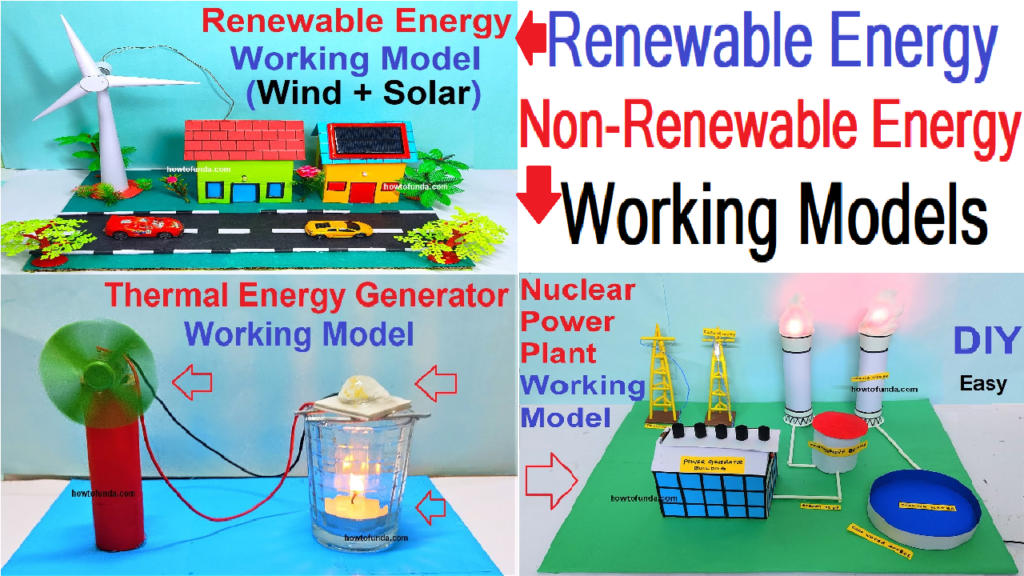Renewable and non-renewable energy are two fundamental categories of energy sources based on their ability to be naturally replenished over time.
They play a crucial role in meeting the world’s energy demands and have different implications for sustainability and environmental impact.
Let’s explore each type:
Renewable Energy:

Renewable energy sources are derived from natural processes that are continuously replenished, making them sustainable in the long term.
These sources have minimal or no negative impact on the environment compared to non-renewable alternatives.
Some common renewable energy sources include:
Solar Energy:
Capturing sunlight and converting it into electricity through solar panels or using solar thermal systems for heating water or air.
Solar energy generation to transmission to home
Solar Water Heaters
Solar Cookers
Wind Energy: Harnessing the kinetic energy of wind to generate electricity using wind turbines.
Hydropower: Using the gravitational force of flowing or falling water to produce electricity in hydroelectric power plants.
Geothermal Energy:
Utilizing the Earth’s internal heat for electricity generation or direct heating and cooling applications.
Biomass: Converting organic materials such as wood, agricultural residues, and biodegradable waste into energy through combustion or other processes.
Renewable energy sources are considered sustainable because they do not deplete over time, emit minimal greenhouse gases during operation, and help reduce dependence on fossil fuels, thereby mitigating climate change and promoting environmental stewardship.
Non-Renewable Energy:
Non-renewable energy sources are finite and will eventually be depleted as they are consumed. They are formed over millions of years and cannot be replenished within human timescales.
The extraction, processing, and burning of non-renewable resources can have significant environmental impacts and contribute to climate change due to the release of greenhouse gases.
Common non-renewable energy sources include:
Fossil Fuels: These include coal, oil, and natural gas, which are the primary sources of energy for electricity generation, transportation, and heating in many parts of the world.
Nuclear Energy:
Generated by splitting uranium atoms in nuclear reactors to produce heat, which then drives turbines to produce electricity.
Nuclear power plant generation model
Non-renewable energy sources have provided much of the world’s energy needs for centuries, but their finite nature and environmental consequences have led to growing interest in transitioning to renewable alternatives.

